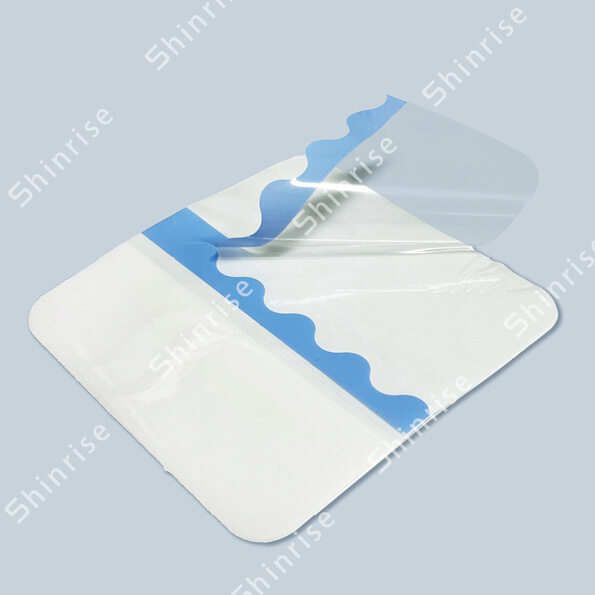Email cannot be empty
Password cannot be empty
Email format error
Email cannot be empty
Email already exists
6-20 characters(letters plus numbers only)
The password is inconsistent
Email format error
Email cannot be empty
Email does not exist
6-20 characters(letters plus numbers only)
The password is inconsistent


The Fascinating World of Biological Wound Dressings
In the realm of modern medicine, few innovations have proven as transformative as biological wound dressings. These specialized materials not only promote healing but also reflect the remarkable advancements in biomedical engineering and material science. As we explore the fascinating world of biological wound dressings, we will delve into their types, applications, advantages, and the role of biological wound dressings manufacturers in driving this industry forward.
Understanding Wound Care
Before we dive into biological wound dressings, it’s essential to understand the significance of wound care. Wounds can result from various causes, including surgical procedures, traumatic injuries, and chronic conditions like diabetes. Proper wound management is crucial for preventing infections, promoting healing, and reducing complications.
Traditional wound dressings have served their purpose for many years, but they often fall short in facilitating optimal healing. They can be uncomfortable, can adhere to the wound, and may not provide the necessary moisture balance. This is where biological wound dressings come into play.
What Are Biological Wound Dressings?
Biological wound dressings are advanced materials designed to enhance the healing process by mimicking the natural biological environment of the skin. They are typically made from natural or synthetic biological materials, such as collagen, alginate, or chitosan, which promote cell growth, reduce inflammation, and create a protective barrier against infections.
Types of Biological Wound Dressings
There are several types of biological wound dressings, each tailored for specific wound types and healing stages:
Hydrocolloid Dressings: These are adhesive dressings that contain gel-forming agents. They provide a moist environment, promote autolytic debridement, and are effective for low to moderately exudative wounds.
Hydrogels: Composed primarily of water, hydrogels are excellent for dry wounds. They provide moisture, help in pain relief, and can promote epithelialization.
Alginate Dressings: Made from seaweed, alginate dressings are highly absorbent and suitable for wounds with moderate to high exudate. They form a gel when in contact with wound exudate, providing a moist environment conducive to healing.
Collagen Dressings: Collagen is a natural protein found in the body that plays a critical role in wound healing. Collagen dressings provide a scaffold for new tissue growth and are especially beneficial for chronic wounds.
Chitosan Dressings: Derived from chitin, a natural polymer found in shellfish, chitosan dressings have antimicrobial properties and can promote faster healing.
Each of these dressings has unique properties that cater to different wound types, making them invaluable tools for healthcare professionals.
The Healing Process and Biological Dressings
Understanding the healing process is crucial to appreciating how biological wound dressings work. Wound healing typically occurs in three phases: inflammation, proliferation, and remodeling.
Inflammation: This initial phase begins immediately after injury and lasts for a few days. The body’s immune response kicks in, and white blood cells work to prevent infection. Biological dressings can support this phase by maintaining a moist environment, which aids in the migration of immune cells to the wound site.
Proliferation: This phase can last for several weeks. New tissue begins to form as collagen and other substances are produced. Biological wound dressings provide a scaffold for new tissue, allowing for faster regeneration.
Remodeling: The final phase of healing can take months to years. The new tissue matures and strengthens. Some biological dressings, such as collagen-based products, can enhance this remodeling phase, ensuring that the new tissue is strong and functional.
Advantages of Biological Wound Dressings
The advantages of biological wound dressings over traditional methods are numerous:
Enhanced Healing: By creating an optimal environment for healing, these dressings can significantly reduce healing times.
Reduced Infection Risk: Many biological dressings have antimicrobial properties that can help prevent infections.
Comfort and Convenience: Biological dressings are often less painful to remove and change, improving the overall patient experience.
Reduced Scarring: Some biological dressings promote better healing, leading to less scarring compared to traditional dressings.
Customization: With advancements in technology, biological dressings can be tailored to meet the specific needs of individual patients, taking into account the type of wound, its location, and the patient’s overall health.

The Role of Biological Wound Dressings Manufacturers
Biological wound dressings manufacturers play a crucial role in the healthcare ecosystem. They are responsible for researching, developing, and producing these innovative products. Their work involves not only creating effective dressings but also ensuring that they are safe and compliant with regulatory standards.
Research and Development
Manufacturers invest heavily in research and development (R&D) to stay ahead of the curve. They explore new materials, technologies, and methods to enhance the effectiveness of biological wound dressings. For example, the integration of smart technologies, such as sensors that can monitor moisture levels and detect infections, is an area of active research.
Quality Control
Quality control is paramount in the production of biological wound dressings. Manufacturers must adhere to strict regulations to ensure that their products are safe for use. This includes rigorous testing for biocompatibility, sterility, and effectiveness. Manufacturers often work closely with healthcare professionals to gather feedback and make necessary improvements.
Education and Training
Beyond production, biological wound dressings manufacturers also play an educational role. They provide training and resources to healthcare professionals on the proper use and application of their products. This ensures that clinicians can make informed decisions and choose the right dressing for each patient.
The Future of Biological Wound Dressings
The future of biological wound dressings looks promising. As technology advances, we can expect to see even more innovative solutions that enhance wound care. Some emerging trends include:
Smart Dressings: The development of dressings that can monitor the wound environment in real-time. These dressings can alert healthcare providers to changes that may indicate complications.
Bioprinting: 3D bioprinting technologies are being explored to create custom wound dressings tailored to the specific needs of individual patients. This could revolutionize how wounds are treated.
Sustainability: Manufacturers are increasingly focusing on sustainable practices, using biodegradable materials and eco-friendly production methods.
Personalized Medicine: Advances in genomics and personalized medicine may lead to wound dressings that are tailored to the individual patient’s biology, enhancing healing outcomes.
Conclusion
Biological wound dressings represent a significant advancement in wound care, offering numerous benefits over traditional methods. With their ability to promote healing, reduce infection risk, and enhance patient comfort, they have become essential tools in modern medicine. The role of biological wound dressings manufacturers in driving innovation and ensuring product quality is vital to the continued success of this field.
As we look to the future, we can expect even more exciting developments in biological wound dressings, promising improved healing outcomes and better patient experiences. Whether through smart technologies, personalized solutions, or sustainable practices, the evolution of wound care is an area to watch closely. The journey of biological wound dressings is just beginning, and its impact on healthcare will undoubtedly be profound for years to come.

